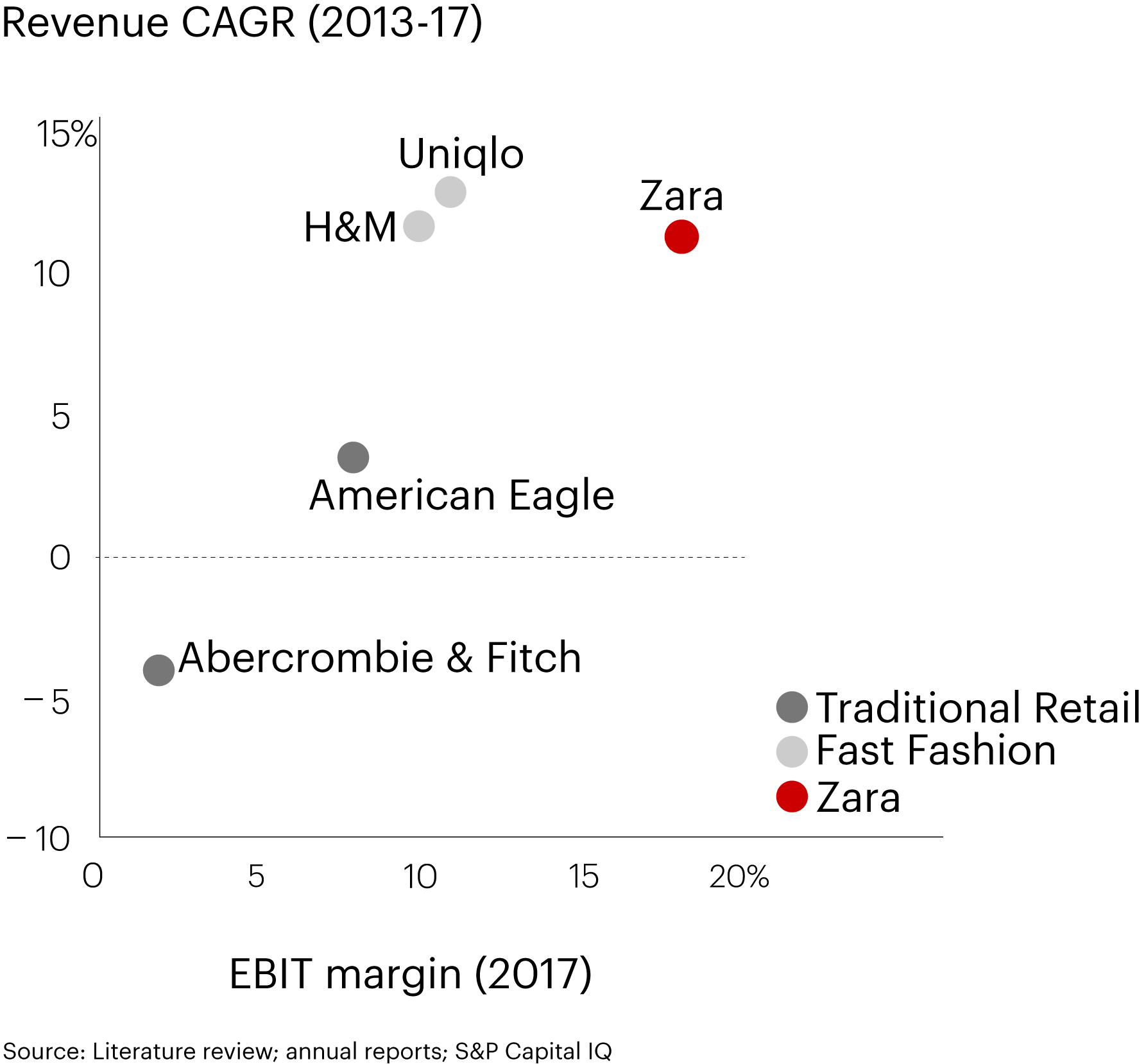FASTER
FASHION
Delivering Customer Intimacy at Scale
For decades, business textbooks have preached a central belief of strategy—firms can be large and low cost, or focused and differentiated, but not both. For a long time, this proved to be true. Over the years, we have looked at dozens of industries and found that very few companies were both leaders in scale and customer advocacy. More often than not, we found an inverse relationship—the bigger the firm, the less likely it was to be the customer advocacy leader.
But what if companies could scale up and, at the same time, quickly learn what customers want and react to their changing preferences?
Today, new technologies and analytic techniques can eliminate the trade-off. As we enter the next era of business, the firm of the future will be defined by a new objective: to compete by using the benefits of scale along with the benefits of customer intimacy.
Tech-based disruptors—such as Google, Facebook, Alibaba and Amazon—represent this emerging shift. But the change reaches far beyond the tech sector.
Over the past 44 years, international retailer Zara has quickly captured a substantial share of a fragmented market, growing to more than 2,200 stores. It has enjoyed fast growth and the highest profit margin among its peers in the fast-fashion industry (see figure). Additionally, Zara leads competitors like H&M in Net Promoter Score®, a popular metric of customer loyalty. Loyalty gets a boost when retailers deliver on the Elements of Value®—fundamental benefits in their most essential, discrete and concrete forms—that matter most to consumers. Zara wins over shoppers by delivering emotional elements such as attractiveness. By mastering this customer intimacy at scale, Zara has maintained its long-held industry leadership and fueled further growth.
Zara has one of the highest profit margins among its peers

